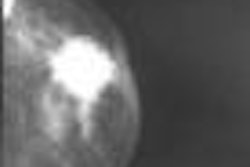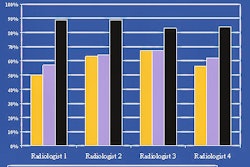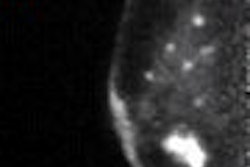The majority of women in the U.S. are maintaining their end of the bargain and undergoing breast cancer screening on a regular basis, according to a study on mammography utilization in the American Journal of Health Promotion. However, certain subgroups of women are still not meeting national screening goals.
Researchers from the Virginia Commonwealth University in Richmond used data from the nationwide, population-based 2002 Behavioral Risk Factor Surveillance Survey (BRFSS). They compared the data for mammography use from BRFSS to goals set by the government-sponsored Healthy People 2010 project.
"The purpose of this study was to provide a point-in-time assessment of progress toward the Healthy People 2010 mammography utilization target which says that 70% of women 40 years of age and older will have had a mammogram within the preceding two years," wrote co-authors Kirsten Barrett, Ph.D., and Jeffrey Legg, Ph.D. Barrett is a senior research associate at the university's Center for Public Policy. Legg is an assistant professor in the department of radiation sciences (American Journal of Health Promotion, July/August 2005, Vol. 19:6, pp. 401-405).
According to the BRFSS database, 83,661 of 93,657 women (ages 40 and up) gave an affirmative answer when asked if they had ever had a mammogram. Of these, 76% reported having undergone breast cancer screening in the past two years, exceeding the Healthy People 2010 target of 70%, Barrett and Legg stated.
The mean age of the respondents was 59. Eighty-six percent were Caucasian and 10% were African-American. The authors noted that the latter group, which previously has lagged behind in screening rates, was slightly more likely to have had mammograms within the past two years than Caucasian women.
"Mammography utilization appears to be improving for historically at-risk groups such as African-American women and women in the oldest age cohorts," they wrote.
On the downside, younger women (ages 40-49) and those with a lower household income (less than $20,000/year) were half as likely to report having had a mammogram in a two-year period. Differences in screening recommendations for this age group (biannual versus annual) may have contributed to lower compliance among these women, Barrett explained in an e-mail to AuntMinnie.com.
Low mammography utilization was also seen among women of Latina and Native American backgrounds. Women without health insurance and those who did not regularly see a primary care physician also did not report undergoing mammography.
"These findings can help guide practitioners in their efforts to ensure that all women receive appropriate mammography screening services," the authors wrote. However, Barrett acknowledged that the current mammography crisis, which has seen many facilities close their doors or cut back on screening services, may take a toll on the Healthy People target numbers as 2010 approaches.
"BRFSS does not ask specifically about why a person did not receive a mammogram -- so access, in this sense, was not explored in our study (but) the closure of facilities and lower reimbursement for mammography are major concerns," Barrett stated.
By Shalmali Pal
AuntMinnie.com staff writer
June 30, 2005
Related Reading
Before breast screening, women want the lowdown on logistics, callbacks, June 27, 2005
Most women overestimate their breast cancer risk, June 14, 2005
Lack of screening for older women may skew breast cancer data, April 25, 2005
Immediate mammo read offers little more than instant gratification, April 20, 2005
Copyright © 2005 AuntMinnie.com



















